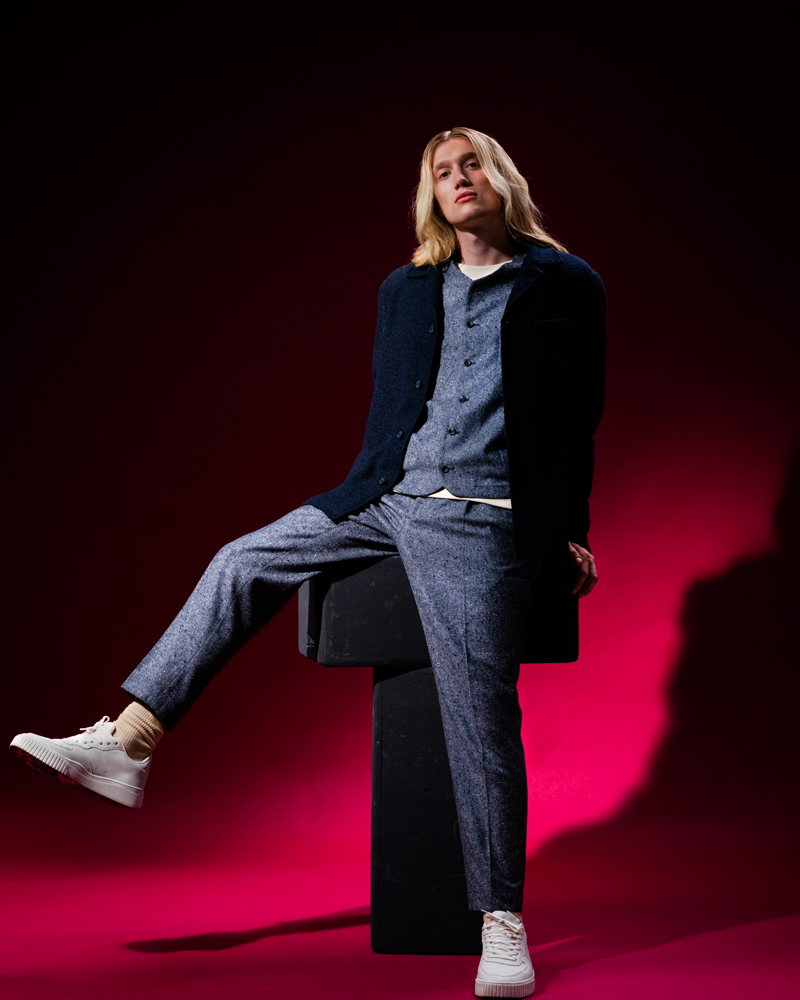Like an echo that comes from the past, the Autumn Winter collection 2023-2024 of Santaniello celebrates the New Formal secondo 5 adjectives with which the creative director Antonio Santaniello has composed an unprecedented manifesto of men's dressing. Starting from these new pillars, a review of the jacket proposal took place 2 bottoni, 3 buttons ripped two and double-breasted. Straighter cuts, shoulders open, new lengths with central slit and soft fit are i lead motive of updating iconic models.

Between the pants, true cornerstone in the history of the brand, there are seasonal interpretations of the Arechi models, Instinct, Clark, Palatine, Fold e 945T, the tailored cargos Load and Mirko, the Barone and Irno joggers. The Zagara overshirt is now a new Santaniello classic, next to the Anemone model, with shirt collar and double patch pocket on the chest. Among the vests, the Follaro with V-neck, 2 pockets and patch pocket on the front plus classic regulating buckle on the back and Silene with crew neck and iconic work pocket on the sides.
Alongside the “new dress”, born from contamination with the workwear world and composed of 3 jacket-shirt pieces, vest and trousers, the return to more classic dresses with a refined shiny effect appears, to be worn strictly with a tie.
The colors of Autumn Winter 2023-2024 they are inspired by the colors of nature, with colors that recall bark and autumn fruit. Alongside the seasonal variations of the symbolic color of Santaniello, purple is present, interpreted as a new blue and expertly mixed with brown and burnt tones.


Characteristic of the new collection is the revisitation of the classic madras tartan based on English archive designs. Flannel is widely used alongside wool, whose blending effect makes fabric patterns less clear and colors more blended. The irregular, grainy surface of the knickerbocker appears among the fabrics, rustic and carded fabric commonly used to create men's sports jackets and in the manufacturing of traditional golf outfits at the beginning of the 19th century. Also in this case it is as if Santaniello heard the echo of a classical tradition, reinterpreting its sound within new contemporary models.











Leave a Reply